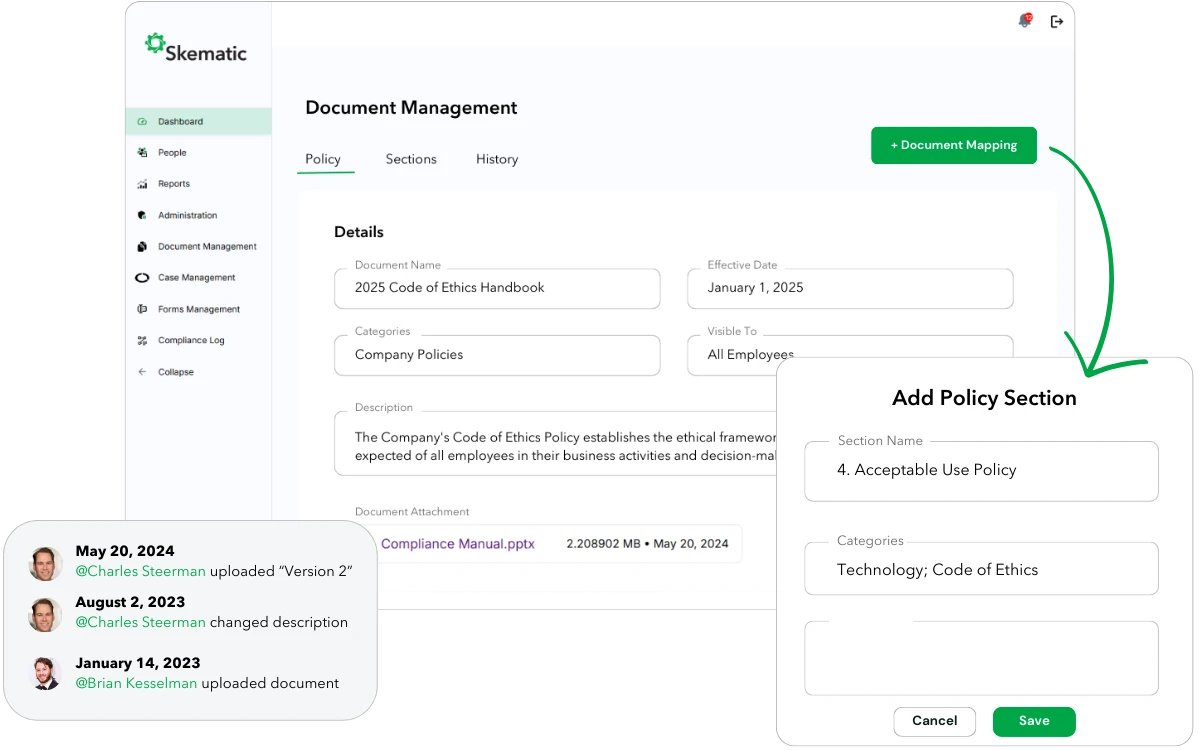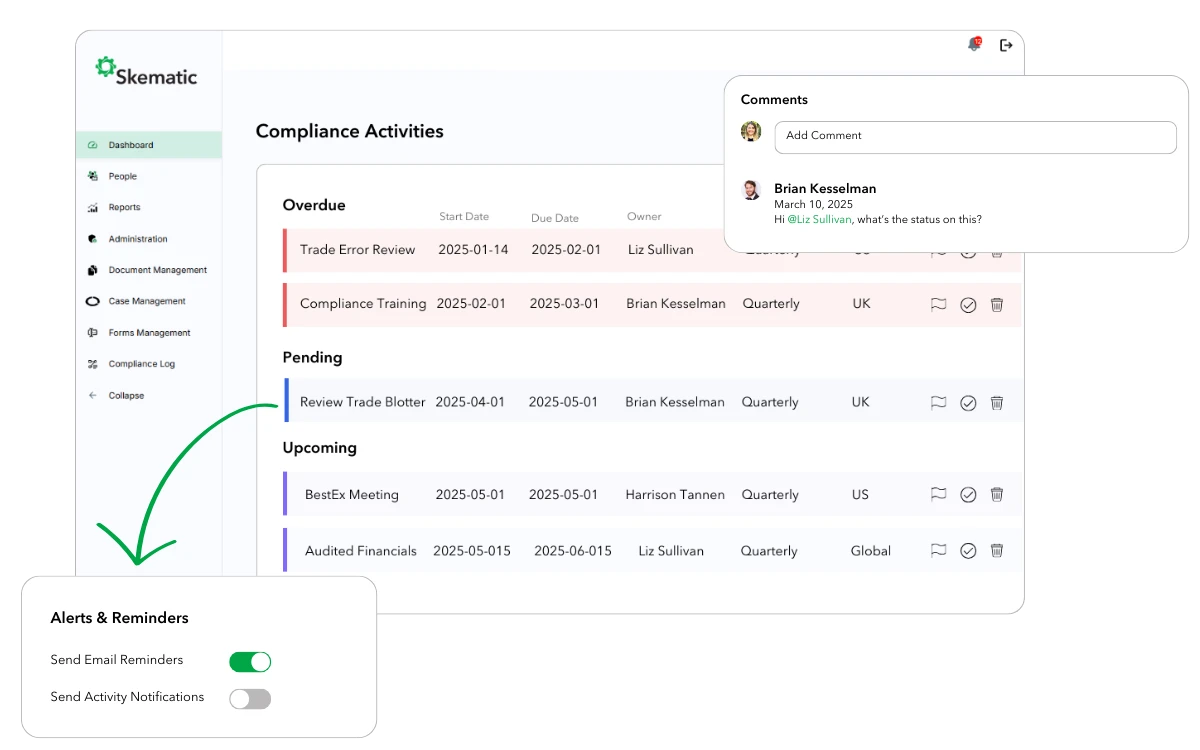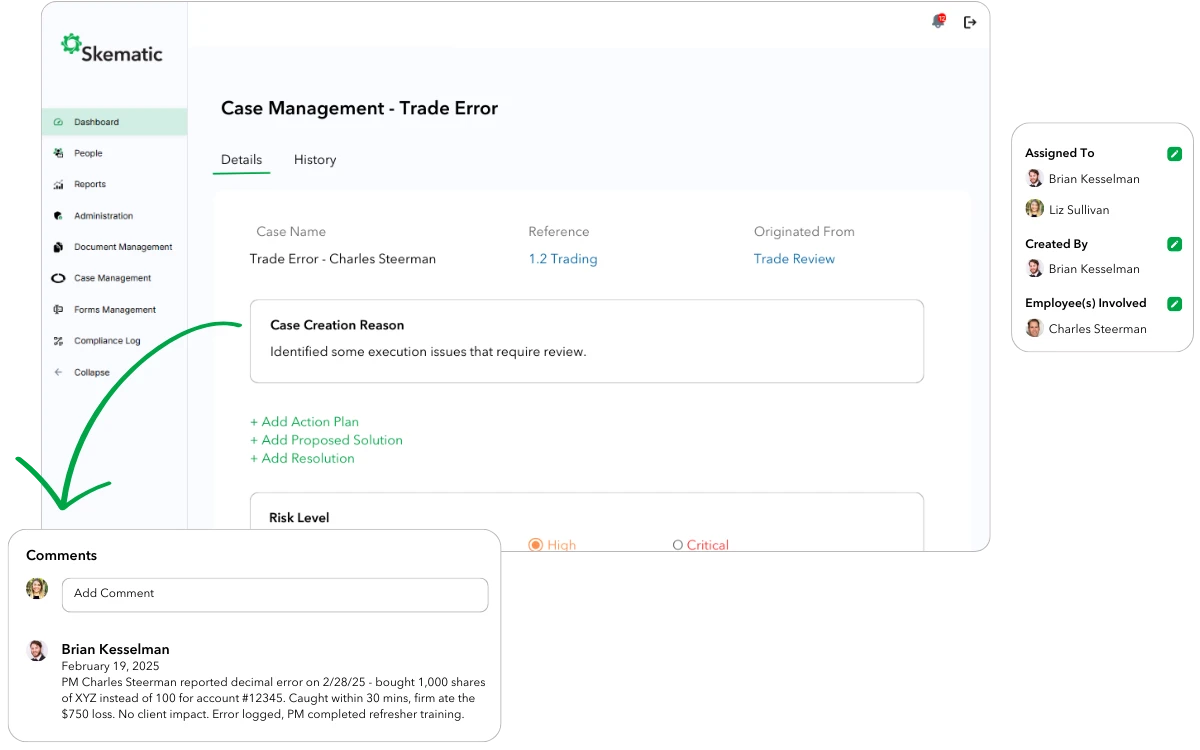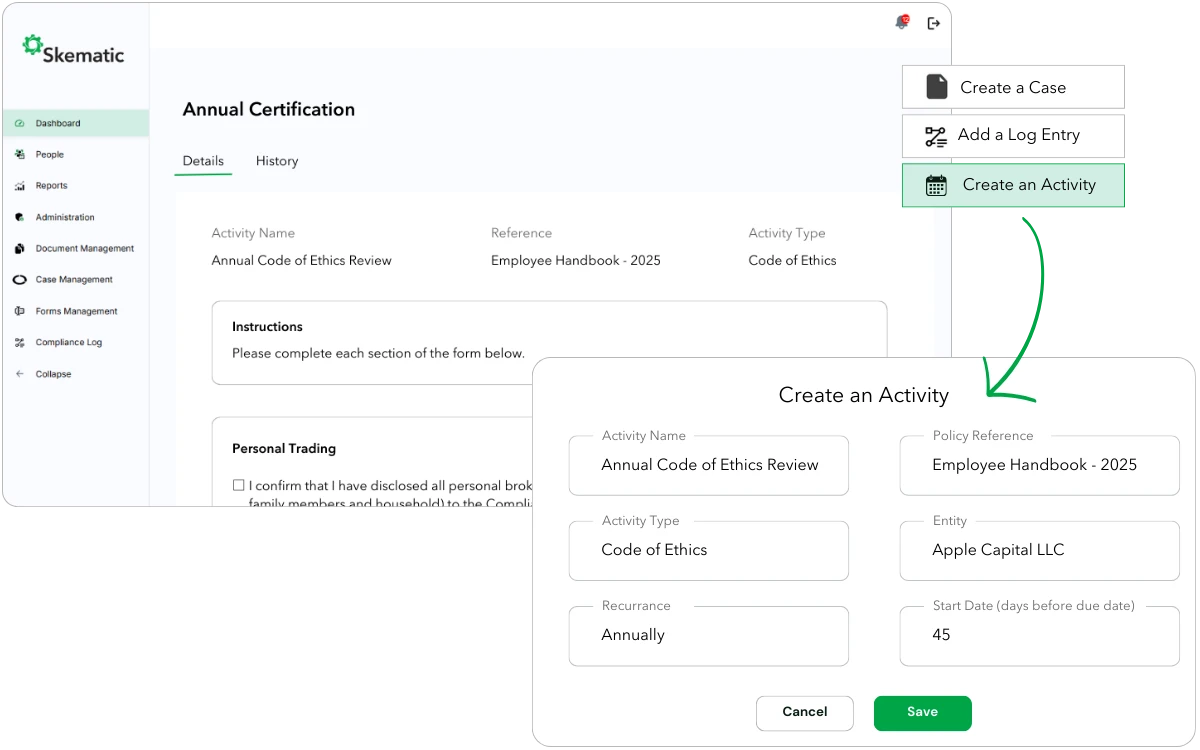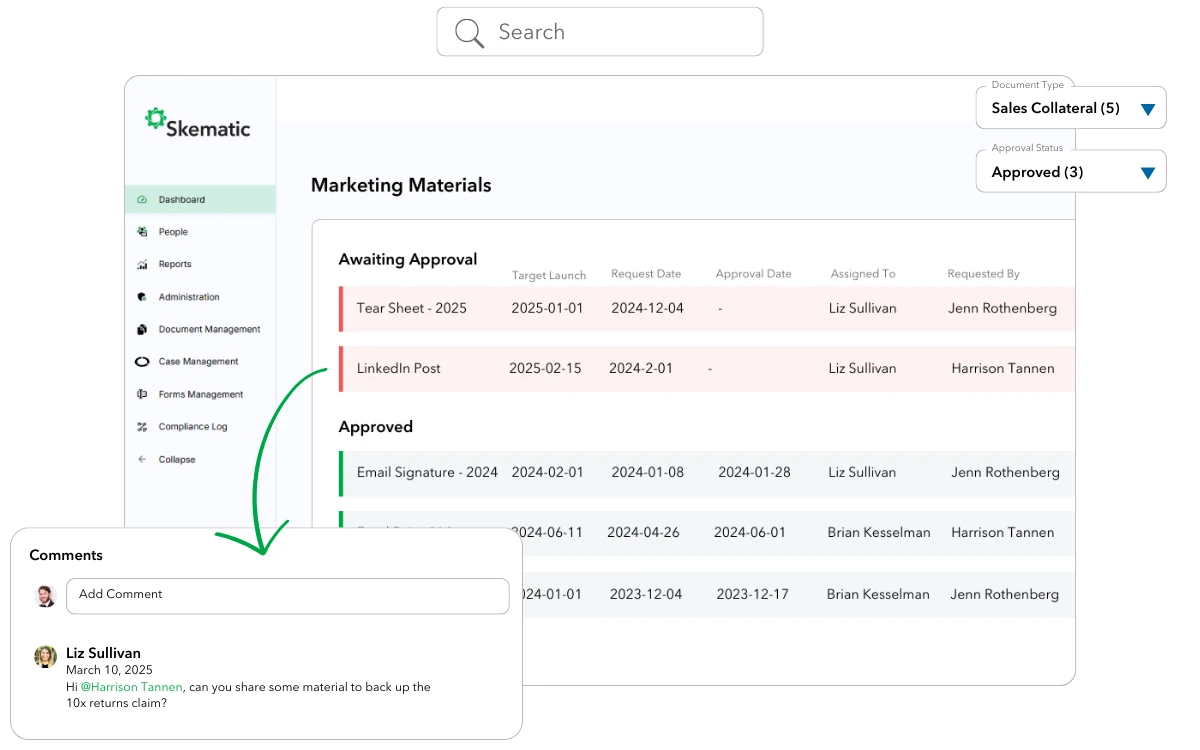The only operating system purpose-built for regulatory compliance.
Skematic combines digital automation with high-touch service to create a command center for financial services compliance.
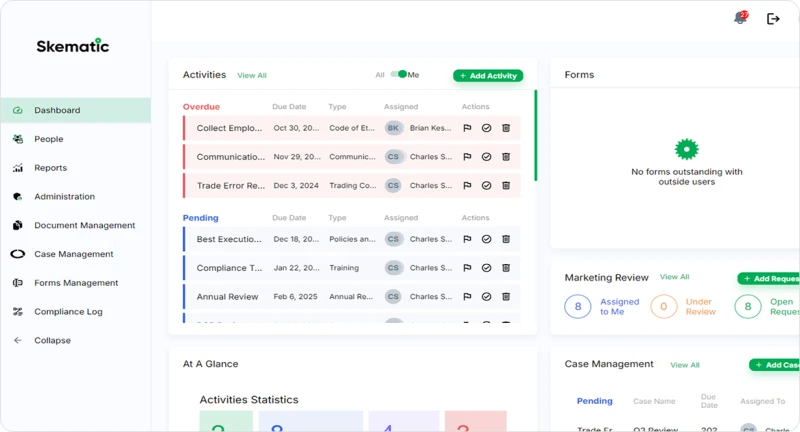
The compliance software you’ll wish you knew about years ago.
We understand the daily reality financial services compliance officers face because we’ve been there – juggling countless spreadsheets, drowning in endless email chains, and switching between scattered tools to maintain and evidence firm-wide compliance.
We also know this can create serious risks: critical activities falling through the cracks, hours wasted on manual tasks, and the worry that when key team members leave, key knowledge leaves with them.
That’s why we’ve built compliance management software that brings compliance processes together in one place, cutting down administrative work by up to 75% while strengthening regulatory controls.
We’re not another Code of Ethics tool– we’re a Compliance Operating System that combines smart technology with high-touch service, helping you look good – to regulators, investors, and internal stakeholders alike.
One platform. Many benefits.
Skematic is the only regulatory compliance platform that systematizes and connects every aspect of your program, from foundational policies to real-time execution and reporting.
Operational Efficiency
- Replace manual tasks
- Centralize & connect disjointed processes
- Cut down time spent on reviews
- Never miss a deadline
Full Flexibility
- Custom fit to your existing program
- Unlimited customization
- Support for scaling firms and programs
Audit Preparedness
- Evidence completeness of regulatory compliance
- Quick response to regulatory inquiries
Compliance Experts
- Expert team with compliance operator background
- White-glove implementation (we do everything!)
- Responsive ongoing customer service & support
Compliance Management & Transparency
- Consolidate systems / processes in one place
- Ensure consistent execution of procedures
- Improve visibility of task status and ownership
- Institutionalized team knowledge
Compliance Team Management
- Improve resource allocation and planning
- Easily onboard /offboard team members
- Ensure global team understands tasks
- CCO oversight dashboard
Skematic multitasks as much as you. All from one place.
You’ll wish every software implementation was this easy.
Send us your existing policies and documentation and tell us your system wish list.
Sit back and relax while our compliance experts build your Skematic site, tailor fit to your policies.
Attend training on how to utilize your Skematic site to the fullest.
Clients love us
Skematic FAQs
The modern way to manage your financial services compliance program.
Schedule your demo and see how Skematic can help streamline your compliance obligations.

